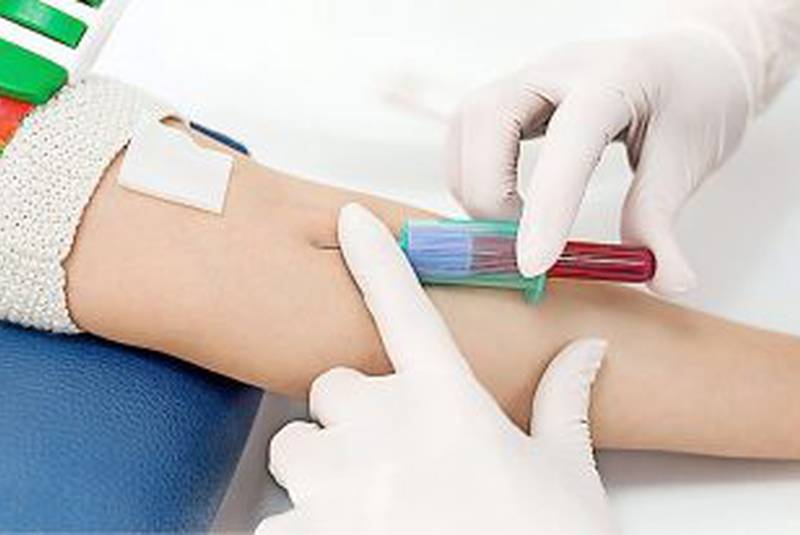Master the Art of Phlebotomy: Essential Training for a Accomplished healthcare Career
If you’re considering a rewarding career in healthcare, becoming a certified phlebotomist could be your perfect start. The skillful practice of phlebotomy - drawing blood for tests, transfusions, and donations – is vital in medical diagnostics and patient care. By mastering the art of phlebotomy through comprehensive training, you can build a stable, rewarding career and make a tangible difference in people’s lives.
Introduction
Phlebotomy is more than just drawing blood; it requires precision, compassion, and technical knowlege. As a healthcare professional specializing in blood collection,your role is pivotal in diagnosing diseases,managing health conditions,and supporting medical research. This article explores the essential aspects of phlebotomy training, its benefits, practical tips for aspiring professionals, and how to excel in this vital healthcare field.
What is Phlebotomy?
Phlebotomy involves the collection of blood samples from patients for laboratory testing or transfusions. It’s a specialized skill within the healthcare system that demands technical proficiency and patient-centered care. A licensed or certified phlebotomist works closely with doctors, nurses, and lab technicians to ensure accurate results and patient safety.
Why is Phlebotomy Essential in Healthcare?
blood tests are among the most common diagnostic tools used worldwide. They help detect illnesses early, monitor ongoing health issues, and determine treatment plans. Without trained phlebotomists, the accuracy and efficiency of blood collection could be compromised, affecting patient outcomes and healthcare quality.
Benefits of Professional Phlebotomy Training
- Career Opportunities: Access to diverse roles in hospitals, clinics, diagnostic labs, and mobile health services.
- Job Stability: High demand for trained phlebotomists ensures job security.
- Foundation for Healthcare Careers: Serves as a stepping stone for advanced medical roles, such as medical assistants, lab technicians, or nurses.
- Personal Growth: Develops skills in dialog, patient care, and technical proficiency.
- financial Benefits: Competitive salary prospects with recognized certification.
Essential Components of Phlebotomy Training
A comprehensive phlebotomy training program covers various critical areas to prepare students for professional practice:
- Anatomy and Physiology: Understanding blood vessels, circulatory system, and human anatomy.
- Blood Collection Techniques: Proper venipuncture, capillary puncture, and antiseptic procedures.
- Equipment Handling: Use of needles, tourniquets, gloves, and testing tubes.
- patient Interaction & Care: Communication skills, confidentiality, and handling anxious patients.
- Safety & Infection Control: Best practices to prevent needlestick injuries and cross-contamination.
- Legal & Ethical Considerations: understanding patient rights, consent, and documentation requirements.
Certification and Licensing Requirements
Most regions require phlebotomists to obtain certification to work professionally. Certification agencies such as the National healthcareer Association (NHA) or American Society for Clinical Pathology (ASCP) set standards for competency. Qualifications typically include completing an accredited training program and passing a certification exam.
| Requirement | Details |
|---|---|
| Training Hours | 40-120 hours depending on region |
| Certification Exam | Written test covering practical and theoretical knowledge |
| Renewal | every 2 years with continued education credits |
Practical Tips to Excel in Phlebotomy
- Practice Makes Perfect: Take advantage of hands-on training and simulate blood draws whenever possible.
- Focus on Patient Comfort: Use calming techniques and explain procedures to reduce anxiety.
- Stay Organized: Keep your equipment sterile and well-maintained.
- Keep Learning: Stay updated on new techniques, safety protocols, and industry trends.
- Develop Good Communication Skills: Building rapport with patients can ease procedures and foster trust.
Benefits of Hands-On Experience and Practical Tips
Case Study: A Day in the Life of a Phlebotomist
Jane, a certified phlebotomist, shares her experience: “My day involves drawing blood from patients of all ages, explaining the process clearly, and ensuring they feel comfortable. effective techniques and empathy are key. Over time, I’ve learned to handle difficult veins and anxious patients with confidence.”
How to Start Your Successful Healthcare Career in Phlebotomy
- Research accredited phlebotomy training schools in your area.
- Complete the required training hours and coursework.
- Pass the certification exam to obtain your professional license.
- Apply for entry-level phlebotomy positions at hospitals, labs, or clinics.
- Continue education and certifications to advance your career possibilities.
conclusion
Mastering the art of phlebotomy is a vital step toward a fulfilling healthcare career. With proper training, certification, and practical experience, you can become an essential part of medical teams that save lives and improve patient outcomes. Whether you’re just starting or looking to advance, integrating knowledge, skills, and compassion will help you excel in this dynamic and rewarding field. Invest in quality phlebotomy training today and open the door to a successful healthcare profession!
